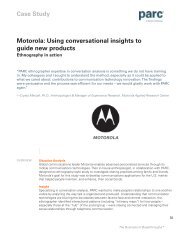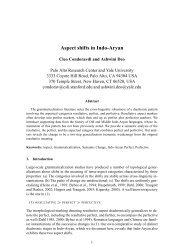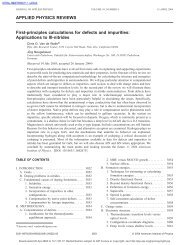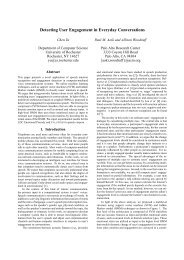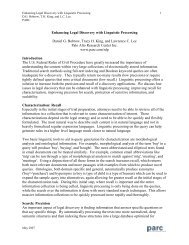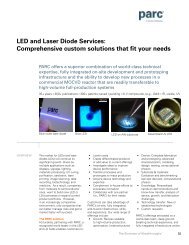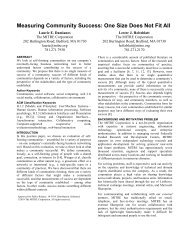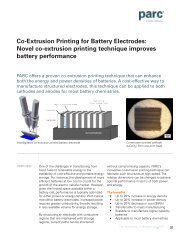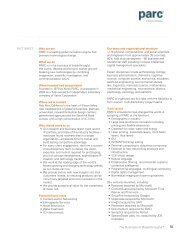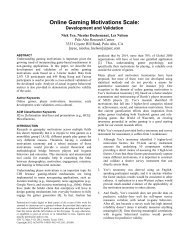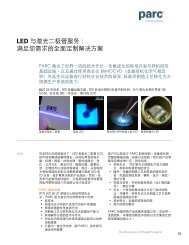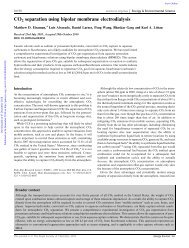PARC Flexible Electronics Services
PARC Flexible Electronics Services
PARC Flexible Electronics Services
Create successful ePaper yourself
Turn your PDF publications into a flip-book with our unique Google optimized e-Paper software.
<strong>PARC</strong> <strong>Flexible</strong> <strong>Electronics</strong> <strong>Services</strong><br />
Application Development: Case Study & Example Technologies<br />
For companies interested in creating high-value, low-cost electronics applications, <strong>PARC</strong> can<br />
customize, build, and integrate devices into the desired form factor.<br />
Set up for low cost and disposability, <strong>PARC</strong>’s printed and flexible electronic expertise and<br />
devices can be adapted for consumer health electronics, manufactured packaging, and electromechanical<br />
sensing in a broad range of biomedical applications.<br />
<strong>PARC</strong> develops custom, flexible,<br />
disposable multi-sensor tape device<br />
for U.S. government<br />
Need<br />
Since explosive blasts could inflict cumulative<br />
head injuries over time to soldiers and<br />
emergency responders in the battlefield,<br />
the U.S. government’s Defense Advanced<br />
Research Projects Agency (DARPA) needed to<br />
develop an early detection solution that could<br />
prevent traumatic brain injury. The dosimeters<br />
needed to monitor and record the intensity and<br />
frequency of battlefield blasts without requiring<br />
maintenance (e.g., additional personnel) in the<br />
field – while remaining low cost. No commercial<br />
alternative existed that met DARPA’s needs.<br />
Requirements<br />
The solution needed to be robust enough to<br />
be read after a period of time in the field, yet<br />
low-cost enough to be discarded after the data<br />
was read. It needed to integrate a variety of<br />
sensors in different locations to collect and<br />
record the various data associated with the<br />
blasts. Furthermore, the sensors would need<br />
to conform to the irregular shape of battlefield<br />
workers’ helmets.<br />
<strong>PARC</strong> Solution<br />
<strong>PARC</strong> scientists designed and developed<br />
the technology for a printed blast dosimeter<br />
electronic “tape” that could sense, record, and<br />
read back various data associated with exposure<br />
to explosive blasts in the battlefield. Comprised<br />
of flexible, lightweight patches – which could be<br />
mounted on battlefield workers’ helmets for a<br />
week at a time and remain robust enough to be<br />
read later – the tape contains memory, control<br />
electronics, and multiple sensors that record<br />
pressure waves, acceleration, acoustic levels,<br />
and light intensities.<br />
Most importantly, the <strong>PARC</strong> technology yielded<br />
results that were comparable to more expensive<br />
commercially available sensors, yet the sensor<br />
tapes were designed to be fabricated under one<br />
dollar – making them low-cost enough to meet<br />
DARPA’s requirement for disposability.<br />
Solution Features<br />
ideastoimpact<br />
A global center for commercial innovation, <strong>PARC</strong> (Palo Alto Research Center, Inc.) works closely with enterprises, entrepreneurs, government<br />
program partners and other clients to discover, develop, and deliver new business opportunities. Previously known as “Xerox <strong>PARC</strong>,” <strong>PARC</strong><br />
was incorporated in 2002 as a wholly owned subsidiary of Xerox Corporation (NYSE: XRX). For more information www.parc.com.<br />
<strong>PARC</strong>, 3333 Coyote Hill Road, Palo Alto, California 94304 USA +1 650 812 4000 lopec2010@parc.com www.parc.com/lopec
For DARPA’s unique requirements, <strong>PARC</strong> developed a solution with the following specifications:<br />
OVERALL SOLUTION FEATURES<br />
• Modular, customizable sensor architecture<br />
• Printed customizable organic electronic circuits<br />
• Mechanically flexible and conformal<br />
• Reduced sensitivity to stress or deformation<br />
• Lightweight<br />
• Compatible with low-cost roll-to-roll processing<br />
– fabrication techniques such as inkjet printing,<br />
laser machining, lamination, die cutting<br />
• Non-contact variable digital data printing with<br />
inkjet technology<br />
• Low-voltage complementary organic circuitry<br />
ELECTRONICS<br />
• Complementary organic transistor electronics<br />
• Low-voltage organic transistors<br />
• Printed organic inverters, clock circuit, and shift<br />
registers<br />
MEMORY<br />
• Non-volatile, low device count analog memory<br />
• All-additive inkjet-printed design<br />
BATTERY<br />
SENSORS<br />
• Fabrication compatible with roll-to-roll<br />
processing<br />
• Piezopolymer-based pressure, acoustic, and<br />
acceleration sensors<br />
• Piezopolymer sensing for low power, low drift,<br />
and compatibility with solution processing<br />
• All-printed organic light sensor<br />
Pressure<br />
• 5-100psi pressure pulse range<br />
• Reduced thermal cross sensitivity<br />
Acoustic<br />
• 100-175dB acoustic range (measured<br />
up to ~500Hz)<br />
• Reduced thermal cross sensitivity<br />
Acceleration<br />
• 5-1000g range<br />
• High-resonance frequency design<br />
Optical<br />
• Linear response from 100-400klux<br />
• Maximum sensitivity between 350-500nm<br />
• Thin-film flexible battery<br />
To have <strong>PARC</strong> develop an application to<br />
meet your needs, contact:<br />
Jennifer Ernst<br />
Director of Business Development<br />
lopec2010@parc.com<br />
+1 650 812 4916<br />
<strong>PARC</strong>, 3333 Coyote Hill Road, Palo Alto, California 94304 USA +1 650 812 4000 lopec2010@parc.com www.parc.com/lopec



